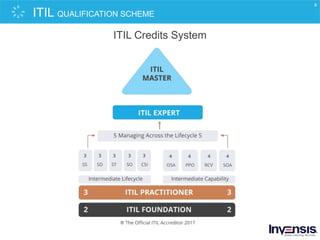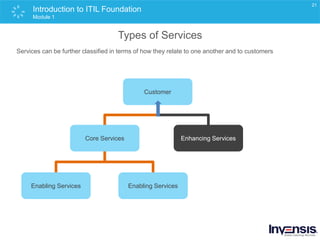The document outlines the ITIL® Foundation Training course provided by Invensis Learning, which focuses on IT service management best practices. It details the course structure, including modules on service strategy, design, transition, operation, and continual service improvement, along with exam format and learning objectives. The course aims to enhance knowledge and competence for individuals and organizations seeking certification in IT service management.





































